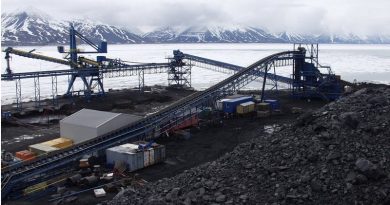Russia tests submarine rescue capsule

With painful memories of the Kursk disaster, the Russian navy has created an emergency chamber on its latest “Severodvinsk” submarine.
This weekend, the crew tested it in Zapadnaya Litsa.
“None of us can get out,” was the last words Captain Lieutenant Dmitri Kolesnikov wrote on the slip of paper the rescue divers found in his pocket.
Kolesnikov was one of the 23 submariners that survived the initial explosion and fire onboard “Kursk” when she sank in the Barents Sea on August 12, 2000.
“All personnel from compartment six, seven and eight moved to the ninth,” Dmitri Kolesnikov explained in the same note.
It is unknown for how long time the crew-members was alive. Maybe hours, maybe days. When the Norwegian rescue divers nine days later opened the outer hatch over the ninth compartment in the rear part of the submarine, they found the airlock all flooded with water.
The entire crew of 118 people lost their lives on the bottom of the Barents Sea.
Lessons learned from Kursk disaster
With the “Severodvinsk” submarine, the Russian navy shows that they take the lessons learned from the “Kursk” disaster seriously.
The submarine has an inbuilt rescue chamber where the crew can gather in case of emergency sinking. The chamber, located as a part of the tower, can be shut out like a catapult and will surface within seconds.
This weekend, the unique catapult chamber was tested with crew members inside for the first time.
Russia’s Ministry of Defense posted photos from the test that took place in the Litsa fjord, just outside where “Severodvinsk” has her homebase. The Litsa fjord house the Northern fleet’s westernmost naval base, only 60 kilometers from Russia’s border to Norway in the north.
Crew exercise
“Severodvinsk” dived down to a depth of 40 meters before the officers in the command room stabilized the vessel to simulate a fixed position on the seabed. When the alarm was triggered to abandon ship, a test team of five crew members entered the rescue chamber, and it was released from the hull. A few seconds later, the chamber pops up on the surface like a cork and a red signal smoke is released.
To make the test fully realistic, in addition to the five men the chamber buoyance is filled with tons of water to simulate the weight of the submarine’s entire crew. “Severodvisk” has a crew of 90 people.
At the surface, the crew members were picked up by rescuers in a fast-speed zodiac and the capsule was lifted onboard another vessel and brought to the pier where it again will be attached to the tower of the submarine.
All of Russia’s new nuclear powered submarines currently under construction are equipped with similar popup rescue chambers, the press service of the Western Military Districts informs.
Zvezda, the Russian Ministry of Denfense’s own TV-channel, has posted a news-video from the exercise.
Related stories from around the North:
Canada: Found at last! Franklin ship lost for 166 years, Eye on the Arctic
Finland: Finland’s president sees rising non-civilian traffic in Baltic, Yle News
Norway: Pacific Akulas arrive in Severodvinsk, Russia, Barents Observer
Russia: Russia says no need for NATO in Arctic, expands own military presence, Barents Observer
Sweden: New book reveals Soviet nuclear threat against Sweden, Radio Sweden
United States: Time to ramp up Arctic infrastructure in the U.S., Analysis by Sourabh Gupta & Ashok K. Roy



